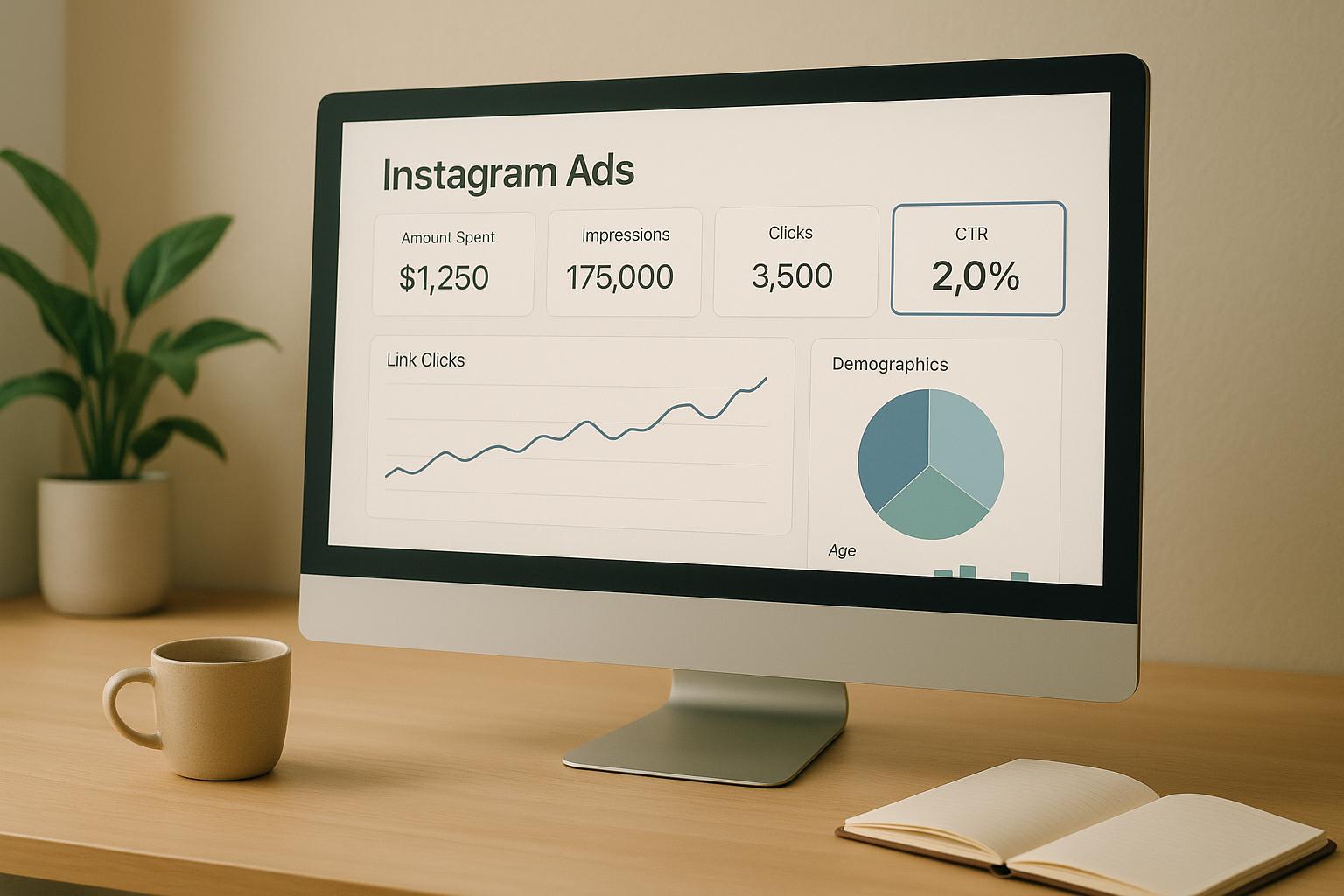Preload and prefetch are two powerful techniques to improve website speed and SEO. Here's what you need to know:
- Preload: Fetches critical resources (like fonts or CSS) immediately for the current page, ensuring faster load times for key elements.
- Prefetch: Prepares resources in advance for future pages, using idle network time to ensure smoother navigation.
Quick Overview
- Preload: High priority, for immediate needs, impacts metrics like Largest Contentful Paint (LCP).
- Prefetch: Low priority, anticipates user actions, speeds up future page loads.
Quick Comparison
| Feature | Preload | Prefetch |
|---|---|---|
| Purpose | Optimizes current page load | Prepares resources for future pages |
| Loading Priority | High | Low |
| Impact on LCP | Major improvement | Limited |
| Best Use Case | Fonts, hero images, critical CSS | Scripts, assets for next navigation |
Both methods can boost performance, but misuse (e.g., overloading prefetch or skipping attributes in preload) can hurt your site. Use tools like Lighthouse to monitor their impact and refine your strategy.
Speed Up Your Website: Preload, Prefetch, Preconnect and More!
Understanding Preload
Preload is a browser directive that tells it to fetch specific resources immediately, ensuring the most critical elements are ready for the current page. This technique plays a key role in improving page performance and boosting SEO.
Preload Technical Overview
When implemented correctly, preload can significantly enhance performance. It works by instructing the browser to download specific resources before they are naturally discovered in the HTML. These resources are then cached and ready to be used when required.
Here’s how preload influences various Core Web Vitals:
| Core Web Vital | Preload Impact |
|---|---|
| Largest Contentful Paint (LCP) | Speeds up the loading of the largest visible content |
| Cumulative Layout Shift (CLS) | Minimizes layout shifts by preloading fonts and images |
| Responsiveness Metric | Enhances interactivity by preloading essential scripts |
"If you don't supply a valid 'as' when specifying what to preload, for example, scripts, you will end up fetching twice."
Understanding these technical details helps identify when preload delivers the most value.
When to Use Preload
Preload is most beneficial for resources that fall into these categories:
- Critical for initial rendering: Content that appears above the fold and is essential for the user experience.
- Late-discovered resources: Assets that the browser would otherwise find later during the parsing process.
- High-priority assets: Elements vital for the page's core functionality.
Practical tests have shown preload’s ability to reduce load times effectively.
"Modern browsers are already pretty good at prioritizing resources, that's why it's important to use
preloadsparingly and only preload the most critical resources."
For instance, Chrome has demonstrated performance improvements by preconnecting to key origins. However, unused preloads can lead to Console warnings roughly three seconds after the load event.
When dealing with cross-origin resources, it’s essential to include a crossorigin attribute to avoid redundant downloads:
"Ensure you're adding a crossorigin attribute when fetching fonts using preload otherwise, they will be double downloaded. They're requested using anonymous mode CORS. This advice applies even if fonts are on the same origin as the page."
Understanding Prefetch
Prefetch is a resource hint that allows browsers to download and cache resources users might need during future navigation. Unlike preload, which focuses on critical resources for the current page, prefetch is all about preparing for what comes next.
Prefetch Technical Overview
Here's how prefetch works under the hood: it downloads resources at the lowest priority and stores them in the browser cache for future use. This process takes advantage of idle network bandwidth, ensuring it doesn’t interfere with loading the current page.
| Prefetch Characteristic | Impact |
|---|---|
| Loading Priority | Lowest priority, avoiding conflict with current page resources |
| Browser Cache | Saves prefetched resources for future navigation |
| Network Usage | Uses idle bandwidth during page load |
| Performance Impact | Speeds up future page load times |
"The browser queues up all hints and requests each resource when it's idle. Prefetching takes place at the 'Lowest' priority, so prefetched resources don't compete for bandwidth with the resources required in the current page."
This method makes prefetch a valuable tool for optimizing performance when future user actions can be anticipated.
When to Use Prefetch
Prefetch is ideal in situations where user behavior is predictable. While preload is about immediate needs, prefetch prepares for what’s likely to come next.
Here are some common scenarios:
| Scenario | Example |
|---|---|
| Search Results | Platforms like eBay prefetch the first five search results to improve conversion rates |
| Authentication Flow | Loading resources for post-login pages during the sign-in process |
| Multi-step Forms | Preparing assets for the next step in a form sequence |
| Common Navigation Paths | Prefetching pages that users are highly likely to visit next |
When implementing prefetch, focus on resources with a high likelihood of future use. Keep an eye on overall performance, especially for mobile users, as prefetch can increase data consumption. To avoid slowing down the initial page load, consider adding prefetch hints dynamically using JavaScript.
It's important to note that browser support for prefetch isn’t universal. For example, Safari doesn’t currently support it. In such cases, fallback strategies are essential to maintain a consistent experience across all platforms.
Preload vs. Prefetch: Main Differences
Preload and prefetch are powerful tools for improving page performance and SEO, but they work in different ways and serve distinct purposes. Let’s break down how these differences, particularly in loading priorities, influence performance.
Loading Priority Differences
The way preload and prefetch handle resource loading is fundamentally different. Preload assigns high-priority to resources, fetching them immediately. When paired with the "as" attribute, preload lets resources inherit their natural priority levels. For instance, stylesheets get the highest priority, while scripts are treated as lower priority tasks.
On the other hand, prefetch operates in the background with low-priority, fetching resources during idle browser time. This ensures it doesn’t interfere with critical resources needed for the current page.
"Preload resources you have high-confidence will be used in the current page. Prefetch resources likely to be used for future navigations across multiple navigation boundaries." - Addy Osmani
Effects on Core Web Vitals
The effect of preload and prefetch on Core Web Vitals depends on how they’re implemented. Here’s a quick comparison of their impact on key metrics:
| Metric | Preload Impact | Prefetch Impact |
|---|---|---|
| Largest Contentful Paint (LCP) | Major improvement for critical resources like hero images and fonts | Limited effect on the current page but can speed up subsequent page loads |
| First Input Delay (FID) | Helps by prioritizing essential scripts | Improves future interactions by caching resources ahead of time |
| Cumulative Layout Shift (CLS) | Reduces layout shifts by ensuring critical assets load early | Neutral unless prefetched resources inadvertently influence layout |
However, improper use of these strategies can backfire and hurt performance. To get the best results, it’s essential to monitor their impact using tools like Google’s Lighthouse and WebPageTest. These tools can provide insights into how preload and prefetch are affecting your page’s overall performance.
sbb-itb-5be333f
Implementation Guidelines
Getting preload and prefetch right can give your website a noticeable boost in performance and improve its SEO rankings. Below, you'll find step-by-step instructions for implementation and a list of common mistakes to steer clear of.
Code Implementation Steps
To implement resource hints correctly, place the appropriate <link> tags in the <head> section of your HTML.
Preload Implementation:
<!-- Preloading critical CSS -->
<link rel="preload" href="/styles/critical.css" as="style">
<!-- Preloading web fonts -->
<link rel="preload" href="/fonts/roboto.woff2" as="font" crossorigin>
<!-- Preloading hero image -->
<link rel="preload" href="/images/hero.webp" as="image">
Prefetch Implementation:
<!-- Prefetching next page -->
<link rel="prefetch" href="/products/popular.html">
<!-- Prefetching resources for future use -->
<link rel="prefetch" href="/scripts/carousel.js">
When deciding what to preload or prefetch, prioritize resources based on their importance. Here's a quick reference guide:
| Resource Type | Preload Priority | Prefetch Priority | Impact on Core Web Vitals |
|---|---|---|---|
| Critical CSS | Highest | Not recommended | LCP, CLS |
| Web Fonts | High | Not recommended | CLS |
| Hero Images | High | Not recommended | LCP |
| Secondary Scripts | Low | High | FID |
| Future Pages | Not recommended | Medium | Future page LCP |
Once you've added the necessary code, it's crucial to avoid common mistakes that could undermine your efforts.
Common Mistakes to Avoid
To maximize performance and SEO benefits, keep the following pitfalls in mind:
-
Skipping the "as" Attribute
Forgetting this attribute can lead to duplicate fetch requests, which wastes bandwidth and slows down loading times. -
Incorrect Cross-Origin Settings
For resources hosted on other domains (like fonts), always include thecrossoriginattribute. This ensures proper loading and avoids unnecessary downloads. -
Overdoing Prefetching
Prefetching too many resources can drain bandwidth, especially on mobile devices. Use tools like Chrome DevTools and Lighthouse to monitor resource usage and fine-tune your implementation. -
Overlooking Browser Compatibility
Some browsers, like Safari, don’t support prefetch. Test your setup across multiple browsers and, if needed, consider alternatives likedns-prefetchorpreconnect.
"You can speed up the load time by 100–500 ms by establishing early connections to important third-party origins. These numbers might seem small, but they make a difference in how users perceive web page performance." – Google
Lastly, remember that Chrome will flag unused preloads with Console warnings about 3 seconds after the load event. Use these warnings to identify and remove any unnecessary preloads that could negatively impact your site's performance.
Browser Support Guide
Ensuring browser compatibility is crucial for successfully implementing preload and prefetch. The following insights build on earlier tips for proper code usage and avoiding common mistakes.
Browser Compatibility List
Before diving into resource hints, it's essential to check the current browser support for these features. Globally, preload is supported by 97.22% of users.
| Feature | Chrome | Firefox | Safari | Edge | Opera |
|---|---|---|---|---|---|
| Preload | ✓ | ✓ | ✓ | ✓ | ✓ |
| Prefetch | ✓ | ✓ | ✗ | ✓ | ✓ |
| DNS-prefetch | ✓ | ✓ | ✓ | ✓ | ✓ |
| Preconnect | ✓ | ✓ | ✗ | ✓ | ✓ |
Key Notes on Implementation:
- Chrome-based browsers, which account for about 70% of the global market share, provide the most extensive support for resource hints.
- Since Safari does not support prefetch, alternative strategies should be used.
- For unused preconnect connections, browsers automatically close them after 10 seconds.
"Preconnect is an important tool in your optimization toolbox... it can eliminate many costly roundtrips from your request path - in some cases reducing the request latency by hundreds and even thousands of milliseconds." - Ilya Grigorik
These details naturally lead to fallback strategies for browsers with limited support.
Backup Solutions
When specific resource hints aren't supported by a browser, fallback techniques can help maintain performance.
For Safari Users:
- Ensure proper cache headers are set to enable the
fetch()API as a fallback. - Use
dns-prefetchas an alternative topreconnect.
For Legacy Browsers:
Detect preload support with the following JavaScript snippet:
const preloadSupported = () => {
const link = document.createElement('link');
return link.relList && link.relList.supports && link.relList.supports('preload');
};
Performance Impact:
Netflix's use of these techniques, along with effective fallbacks, led to a 30% reduction in Time to Interactive.
Best Practices for Cross-Browser Support
- Always include the
asattribute with preload to avoid duplicate downloads. - Use
dns-prefetchstrategically for external domain references. - Employ feature detection before implementing advanced resource hints.
- Regularly check browser console warnings to identify and resolve compatibility issues.
While resource hints can significantly improve performance, browsers may occasionally disregard them due to factors like network conditions or device capabilities. However, preload is treated as a mandatory instruction by all browsers.
Conclusion
The techniques discussed earlier highlight key ways to enhance website performance and SEO. Among these, preload and prefetch stand out as powerful tools, delivering measurable results for major companies.
Preload focuses on optimizing critical on-page resources, directly affecting Core Web Vitals metrics like Largest Contentful Paint (LCP). Yoav Weiss, Principal Architect at Akamai, explains its value:
"Preload provides more granular loading control to web developers. It gives developers the ability to define custom loading logic without suffering the performance penalty that script-based resource loaders incur".
The effectiveness of resource hints is evident in real-world examples:
| Company | Implementation | Performance Impact |
|---|---|---|
| Shopify | Preloading web fonts | 50% (1.2s) improvement in time-to-text-paint |
| Treebo | Preloading header image and Webpack bundles | 1s reduction in First Paint and Time to Interactive |
| Netflix | Strategic prefetching | 30% reduction in Time to Interactive |
While preload targets resources needed immediately for the current page, prefetch looks ahead, preparing for future navigation. When used correctly, these techniques not only boost performance but also ensure resources are utilized efficiently. Adopting these strategies can help maintain top-notch website performance and strengthen SEO outcomes.
FAQs
How do I decide which resources to preload and prefetch for my website?
When deciding which resources to preload, focus on the ones that are absolutely necessary for rendering the current page and delivering a smooth user experience. These typically include key scripts, stylesheets, and images that show up above the fold. By preloading these critical assets, you can noticeably speed up loading times and improve key metrics like Time to Interactive.
For prefetching, think ahead to what users might need next - like resources for the next page or interactive features they'll likely use. However, don’t go overboard. Excessive prefetching can overwhelm your network and hurt performance instead of helping it. Tools like Chrome DevTools can be incredibly useful for tracking resource usage and making smart choices about what to prioritize for the best results.
What mistakes should I avoid when using preload and prefetch for better SEO?
When using preload and prefetch to boost SEO, missteps can backfire and slow your site instead of speeding it up. One common mistake is going overboard - over-prefetching can eat up bandwidth by loading assets users might never need, while misusing preload can delay critical resources from loading when they’re needed most.
Another issue is not prioritizing the right resources. If you preload files that aren’t essential, it can drag down your site’s performance and frustrate users. The solution? Take the time to carefully decide which assets to preload or prefetch, and keep an eye on the results. Striking the right balance will help you achieve quicker load times and better SEO without unnecessary hiccups.
What’s the difference between preload and prefetch, and how do they impact SEO and Core Web Vitals?
Preload and prefetch are two smart ways to make your website faster, which directly impacts Core Web Vitals - a key factor for both SEO and user experience.
Preloading focuses on fetching critical resources, like fonts or images, as early as possible. This helps improve important metrics such as First Contentful Paint (FCP) and Largest Contentful Paint (LCP), making the site feel quicker and more responsive to users right from the start.
Prefetching, on the other hand, looks ahead. It predicts what users are likely to click next and loads those resources in advance. This makes navigating between pages feel almost instant, creating a smoother browsing experience.
Together, these techniques can lead to faster load times, lower bounce rates, and higher user engagement - all of which are important signals for search engines when ranking websites. By implementing preload and prefetch, you're not just improving performance; you're also giving your SEO a meaningful boost.


